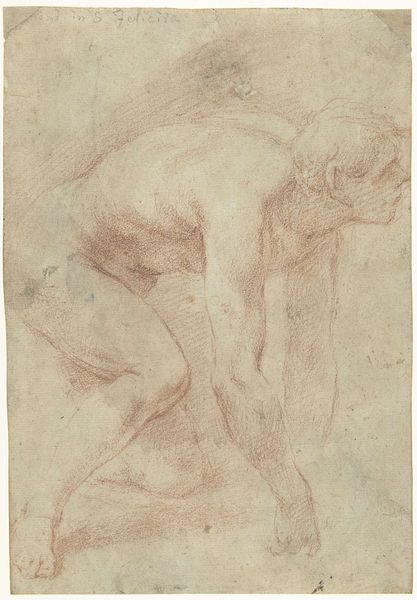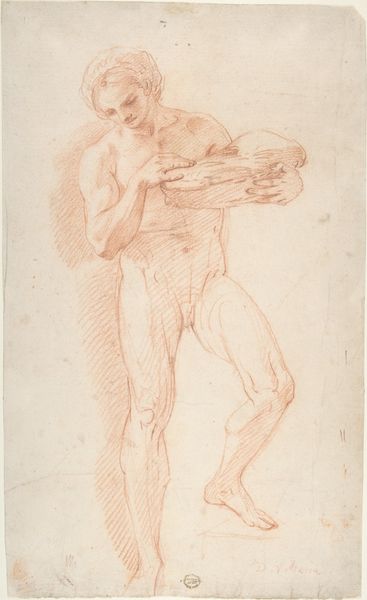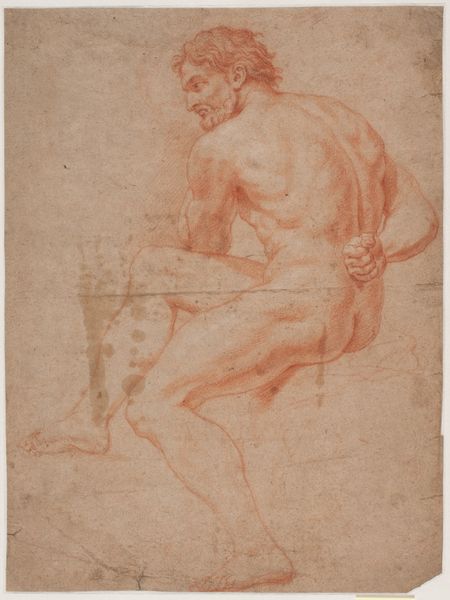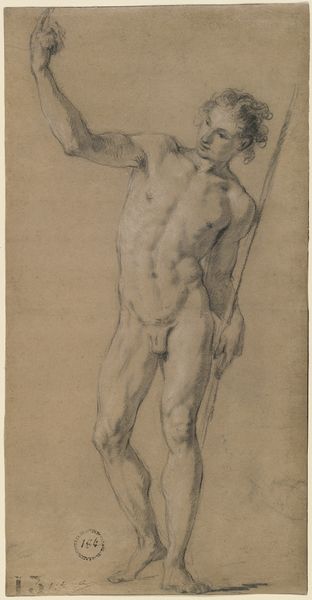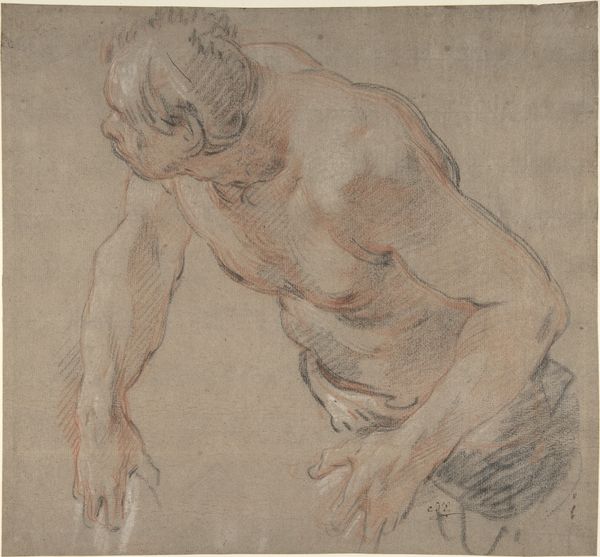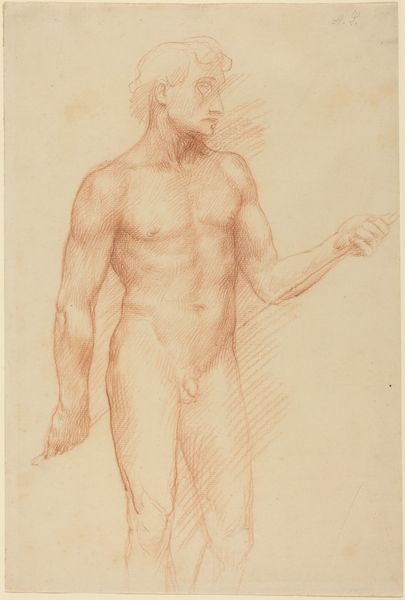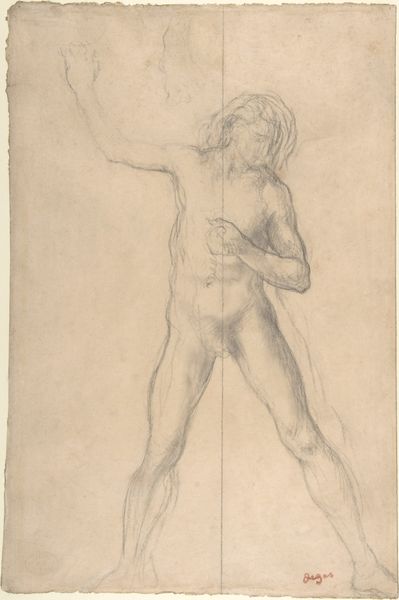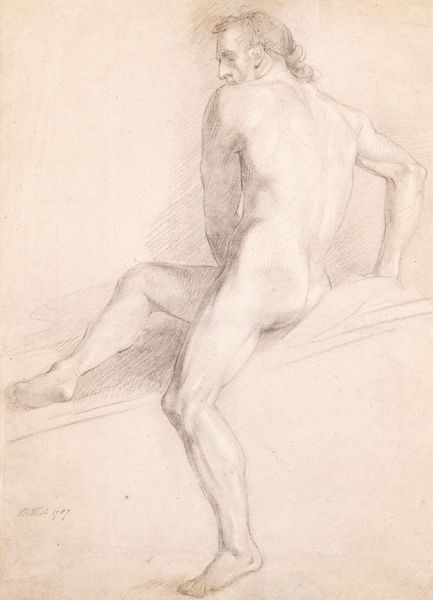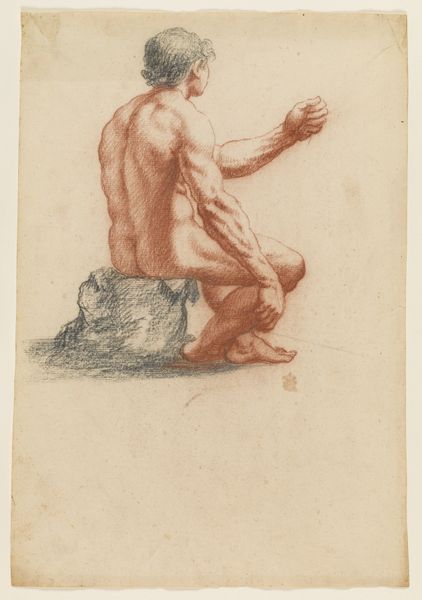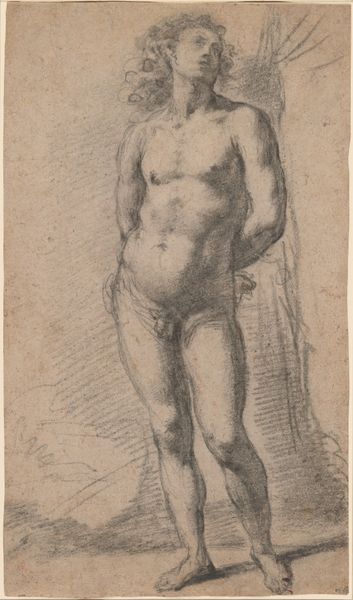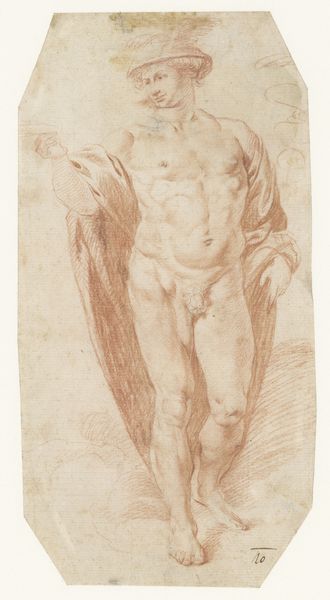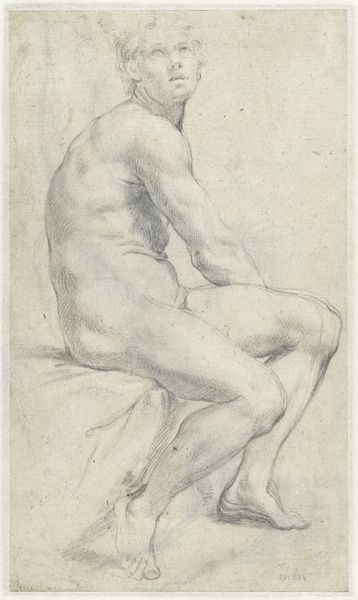
drawing, pencil
#
portrait
#
drawing
#
baroque
#
pencil sketch
#
charcoal drawing
#
pencil
#
nude
Dimensions: height 190 mm, width 158 mm
Copyright: Rijks Museum: Open Domain
Curator: Pieter Lastman's "Nude Young Man, Half Length," likely rendered between 1600 and 1633, presents us with a fascinating example of Baroque drawing technique, particularly through his employment of pencil and, perhaps, charcoal. Editor: Right away, there’s a sort of...unfinished symphony feeling here, isn’t there? The tentative lines, that reddish hue of the paper... it's as if he's caught in a moment, yearning to spring to life, but held back. Melancholy, definitely. Curator: It's compelling to think about the cultural implications of representing the male nude within that specific period. Lastman's process of layering lines, his manipulation of light and shadow through hatching... it all signifies a conscious construction of form. Editor: Exactly! And look at the subject's gaze – averted, almost shy. It shifts the focus, doesn't it, from purely sensual to something much more contemplative. I imagine him pausing mid-pose, a thought intruding. Maybe he's contemplating how absurd posing nude is... for a day's wages? Curator: Such studio practices reveal the conditions of art production at the time: the economics involved, the access to models, the patronage systems that dictated acceptable subjects. This isn’t simply an act of creative genius but the outcome of specific material and social relations. We should notice also how this 'sketch' can itself be valuable. Editor: Valuable indeed. I mean, seeing these early strokes, it’s like we're peeking over Lastman’s shoulder, witnessing the birth of an idea. He hasn't ironed out all the kinks. It is rough and you can imagine him saying "hold that pose", over and over. Beautiful, though, very vulnerable. A window. Curator: Perhaps it prompts us to reflect on the processes inherent in artmaking and how artistic output are dependent upon economic structure of their historical period. Editor: Yes, now I just see a drawing that captures fleeting beauty. Almost like the scent of roses at a funeral. I see myself when I look at art, a sort of personal empathy. A connection made possible across the chasms of history.
Comments
rijksmuseum about 2 years ago
⋮
Rembrandt trained with Lastman around 1624. In that period, as preparation for his history pieces, Lastman drew figure studies in red chalk on paper that he had coloured yellow. This technique appealed to Rembrandt. During and shortly after his apprenticeship, Rembrandt made multiple drawings in red chalk on prepared paper. Years later he even owned a ‘boeckie vol schetsen […] met rood krijt’ (little book full of sketches […] in red chalk) by Lastman.
Join the conversation
Join millions of artists and users on Artera today and experience the ultimate creative platform.
